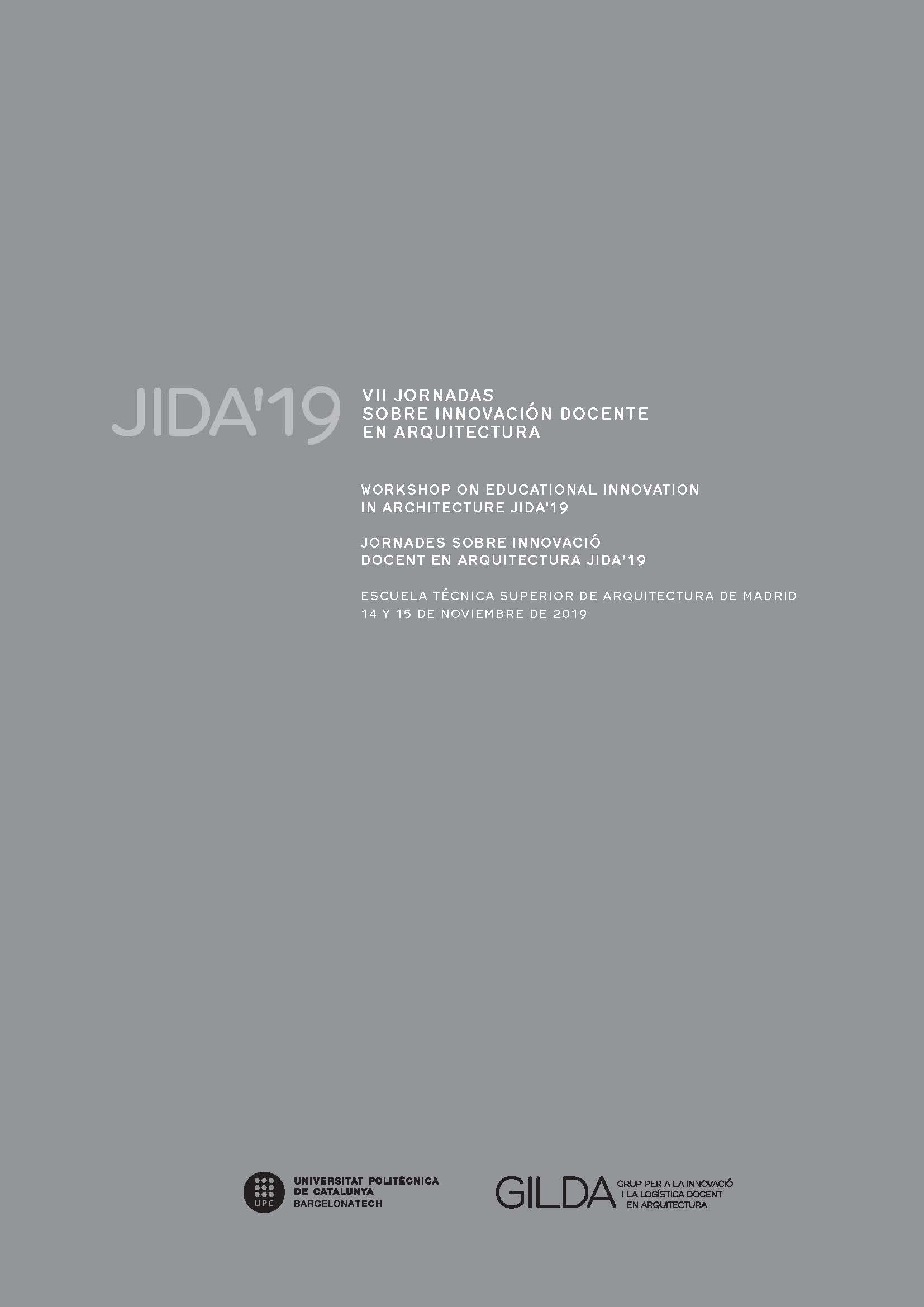The Neighborhood is my Studio
DOI:
https://doi.org/10.5821/jida.2019.8356Abstract
“The Neighborhood is my Studio” proposes to locate the epicenter of architectural education in Solanda, a popular neighborhood in Quito. We have experimented with several pedagogical methodologies in order to develop participatory urban and architectural design with and for the neighborhood. Some are traditional -diagnosis, sensory mapping, palimpsest-, others less so: tactical urbanisms, collective data gathering, or an urban gallery-workshop that allows us to transport the studio into public and communal spaces. The complex circumstances of the neighborhood have expanded our methods beyond our discipline into the realms of structural reinforcement, collective data gathering and cadaster build up (using KoBo Toolbox), urban commons mapping, and community event organizing. The series “The neighborhood takes over the university” attempted to revert the logic of what is traditionally considered expertise and present neighbors as the most knowledgeable actors regarding their needs, circumstances, and future expectations/imaginaries.
References
ALZINA, R. B. (2004). MetodologÃa de la investigación educativa (Vol. 1). Editorial La Muralla.
CORBOZ, A. (2004). “El territorio como palimpsesto†en Ramos, Ã. M. Lo urbano en 20 autores contemporáneos (Vol. 7). Barcelona: Universitat Politecnica de Catalunya.
DE TERÃN, L. M. y DEL PINO MARTÃNEZ, I. (2005). Algunas reflexiones sobre el Ecuador prehispánico y la ciudad inca de Quito. Quito: ConsejerÃa de Obras Públicas y Transportes, Dirección General de Arquitectura y Vivienda.
DREISEITL, H. y GRAU, D. (eds.). (2012). New waterscapes: Planning, building and designing with water. Berlin: Walter de Gruyter.
HARDIN, G. (1968). The tragedy of the commons. Science, 162(3859), 1243-1248.
HERRERA, G. (2008). Ecuador: la migración internacional en cifras. Quito: FLACSO.
JACOBS, J. (1961). The Death and Life of Great American Cities. New York: Random House.
KUEVA, F. (2017). “Ciudad Modelo: Memoria del barrio Solanda†en CIUDAD MODELO, 7 de noviembre 2017. <http://www.paralaje.xyz/ciudad-modelo-memoria-del-barrio-solanda/> [Consulta: 13 de septiembre 2019]
MCHARG, I. (1969). Design with nature. New York: University of Pennsylvania.
MOSTAFAVI, M. y DOHERTY, G. (eds.). (2016). Ecological urbanism. Baden: Lars Müller Publishers.
MOSTAFAVI, M., DOHERTY, G., CORREIA, M., DURAN CALISTO, A. M. y VALENZUELA, L. (eds.). (2019). Urbanismo ecológico en América Latina. Barcelona: Editorial GG.
MURILLO, F. y SCHWEITZER, M. (2011). “Planear el barrioâ€, Urbanismo participativo para construir el derecho a la ciudad. Buenos Aires, AG: Cuentahilos Ediciones.
NÚÑEZ, R. B. (2011). Los movimientos sociales en los 80 y 90. La incidencia de las ONG, la Iglesia y la Izquierda. Quito. Centro de Investigaciones Ciudad.
OSTROM, E. (1990). Governing the commons: The evolution of institutions for collective action. Cambridge: Cambridge university press.
RAMÓN NAVARRETE, P. B. (2017). Solanda, el caleidoscopio de la experiencia urbano-barrial (Tesis maestrÃa). Quito: FLACSO.
RIVAS, N. y RAMÓN, P. (2018/11/05) “El metro está pasando y Solanda se está hundiendo†en La Barra Espaciadora, 5 de noviembre 2018, <https://labarraespaciadora.com/ddhh/el-metro-de-quito/> [Consulta: 13 de septiembre 2019]
RODRÃGUEZ, L. (1990). Mujeres de Solanda: mujer, barrio popular y vida cotidiana. Quito: CEPAM.
SALAZAR, M., ROMERO, I. y RODRÃGUEZ, J. (1989). Cambios en las estrategias de vida de los habitantes del Programa Solanda a partir de la adjudicación de la vivienda (Tesis doctoral). Quito: FLACSO.
VENTURI, R., SCOTT BROWN, D. y IZENUR, S. (1977). Learning from Las Vegas: the forgotten symbolism of architectural form. Cambridge: MIT press.
WHYTE, W. H. (1980). The social life of small urban spaces. Washington D. C.: The Conservation Foundation.



















